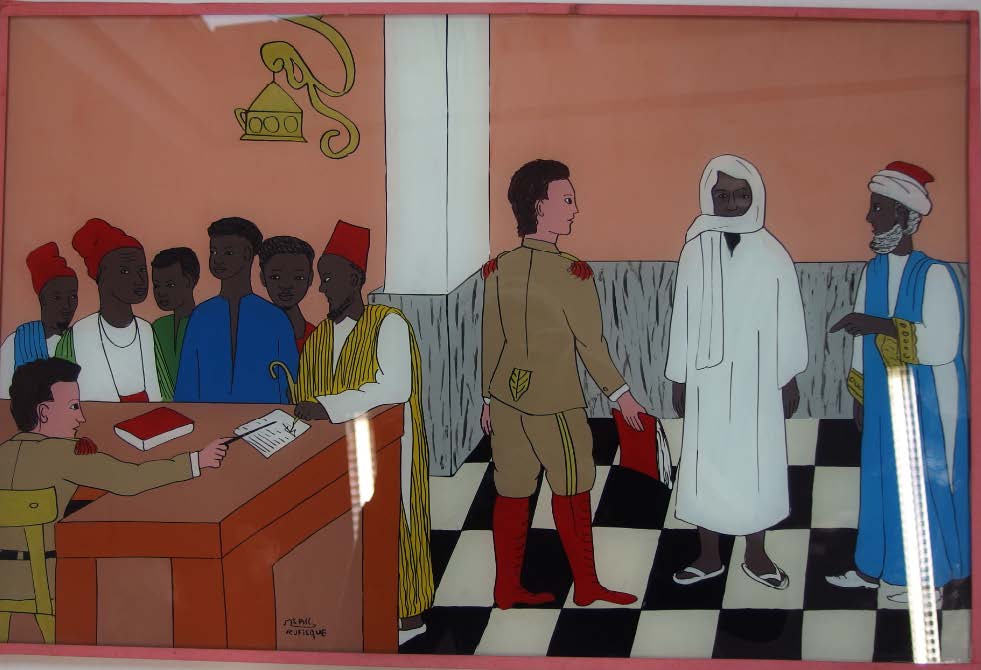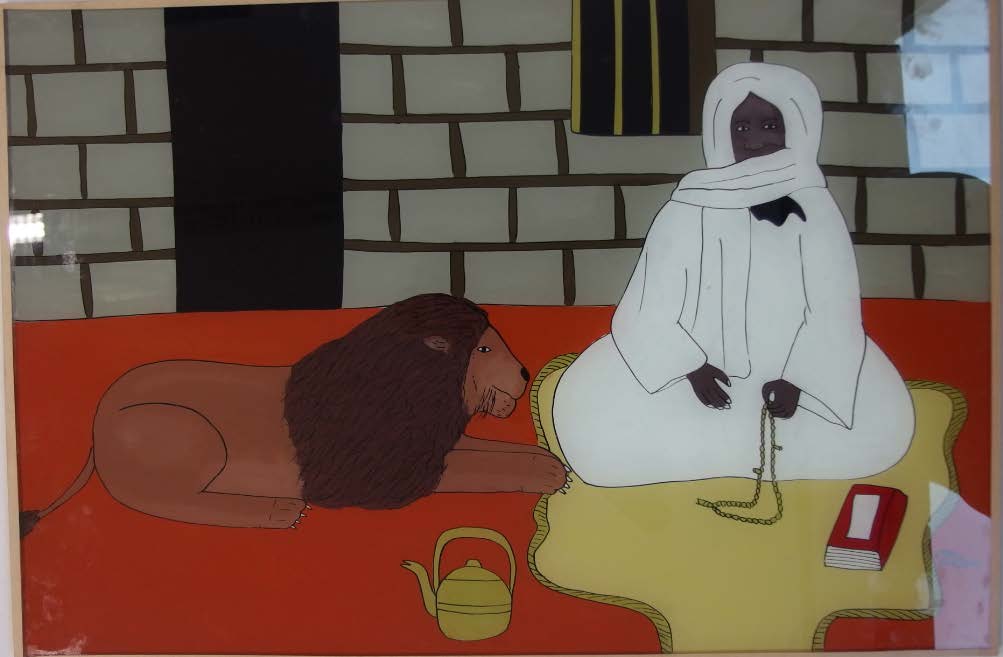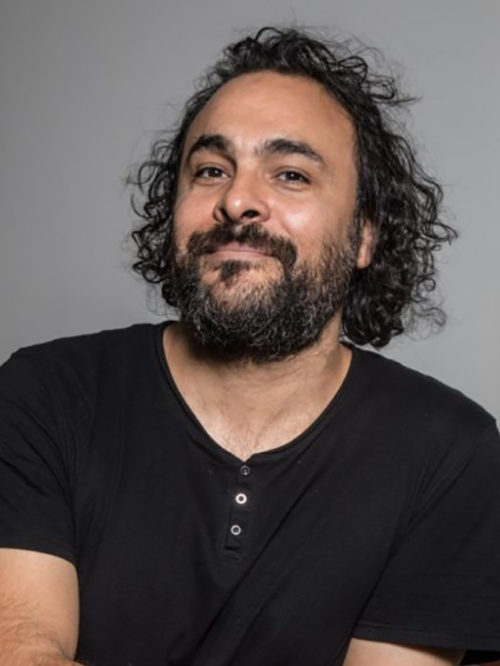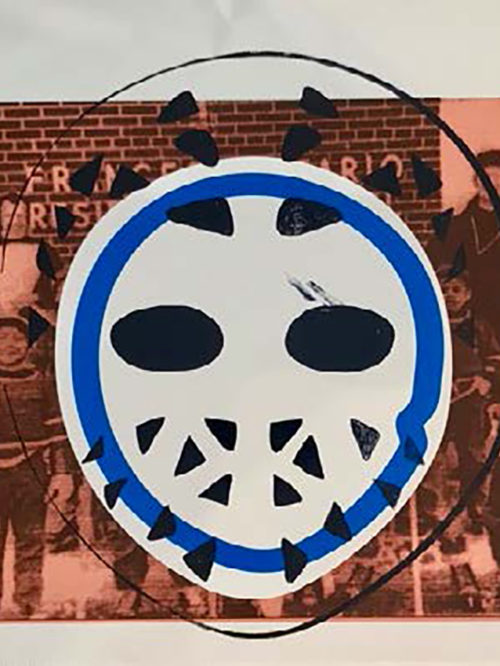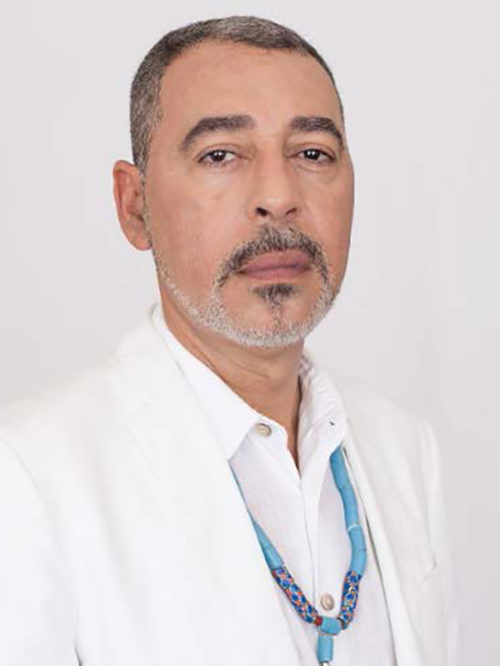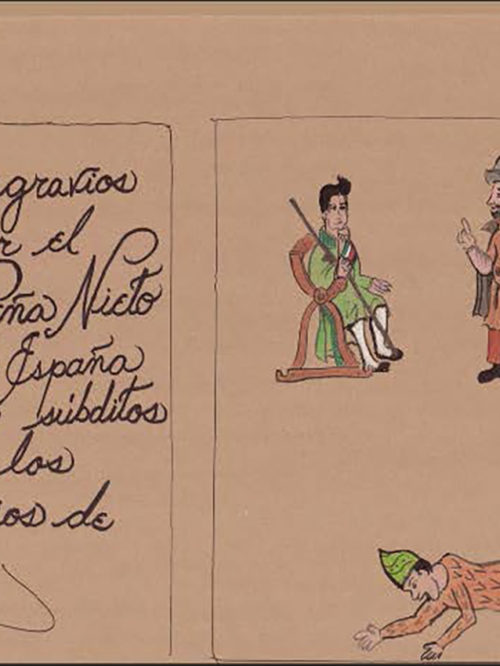Mamadou Sall
Sheikh Amadou Bamba in court in Saint-Louis, 2015
The colonial authorities convened all the religious leaders of Senegal. They were to sign a treaty in which they accepted the French government as their sole authority. All Marabouts signed with the exception of Sheikh Amadou Bamba, who stated that the only authority he recognised was God. Thereupon the colonial government sent him into exile in Gabon.
Sheikh Amadou Bamba and the lion, 2015
The picture shows Sheikh Amadou Bamba who was thrown into a cell with a hungry lion by the French colonial government in Saint-Louis. However, the lion felt the divine power of the Sheikh and instead of killing him, he became his Talibé (disciple).
Sheikh Amadou Bamba praying on the water, 2015
Sheikh Amadou Bamba prays on the water on his way into exile after the French colonial masters forbade him to pray on board. This scene is most often depicted in glass paintings, and is varied in many ways, whereby the following elements are usually included: The Sheikh has spread out his prayer rug on the water, while the colonialists watch from the ship and fish swim past to receive his blessing.
Sheikh Amadou Bamba (1853–1927) was one of the great Islamic mystics of West Africa. At the end of the 19th century he founded the Mouride Sufi order, which preaches a peaceful Islam and is characterised by a high work ethic. As the French colonial occupation feared the power of the Sheikh, he had to spend many years in exile from 1895 onwards.
The Mourides see Sheikh Amadou Bamba as an anti-colonial hero. The glass paintings show how he miraculously survived the attempts to be killed by the colonial masters in exile, or even reversed them. In contrast to the intentions of the French colonial power, Sheikh Amadou Bamba gained further influence through these stories during his exile. From the point of view of his followers, the exile was a test of Allah and the colonial masters were unwitting assistants of this divine plan.
The image of the Sheikh is considered a blessing and is omnipresent in Senegal today: on taxis, as murals or as reverse glass paintings.
Mamadou Sall (born in 1980 in Rufisque, Senegal / lives and works in Rufisque, Senegal) is a Senegalese artist specialising in reverse glass painting, a technique in which the paint is applied directly to glass, which is then laterally reversed. He paints a variety of motifs for both tourists and Senegalese art lovers. Many of his works show the life and work of Sheikh Amadou Bamba (1853-1927), one of the great Islamic mystics of West Africa. At the end of the 19th century, he founded the Mouride brotherhood, a Sufi community which preaches a peaceful Islam. As an artist-in-residence at the Rautenstrauch-Joest-Museum (2016/17), Mamadou Sall created two murals for the exhibition Pilgern – Sehnsucht nach Glück? (“Pilgrimage – Longing for Bliss?”) These also represented a customary way to worship Sheikh Amadou Bamba.
Foto: Taimas Ahangari, Copyright: © Rautenstrauch-Joest-Museum Köln
© Rautenstrauch-Joest-Museum Köln
Mamadou Sall
Sheikh Amadou Bamba vor Gericht in Saint-Louis, 2015
Rufisque, Senegal
Glas, Pigment, Bindemittel
Sammlung Inv. Nr. 67704
Sammlerin: Clara Himmelheber
© Rautenstrauch-Joest-Museum Köln
Mamadou Sall
Sheikh Amadou Bamba und der Löwe, 2015
Rufisque, Senegal
Glas, Pigment, Bindemittel
Sammlung Inv. Nr. 67704
Sammlerin: Clara Himmelheber
© Rautenstrauch-Joest-Museum Köln
Mamadou Sall,
Sheikh Amadou Bamba betend auf dem Wasser, 2015
Rufisque, Senegal, 2015
Glas, Pigment, Bindemittel
Sammlung RJM Inv. Nr. 67706
Sammlerin: Clara Himmelheber



